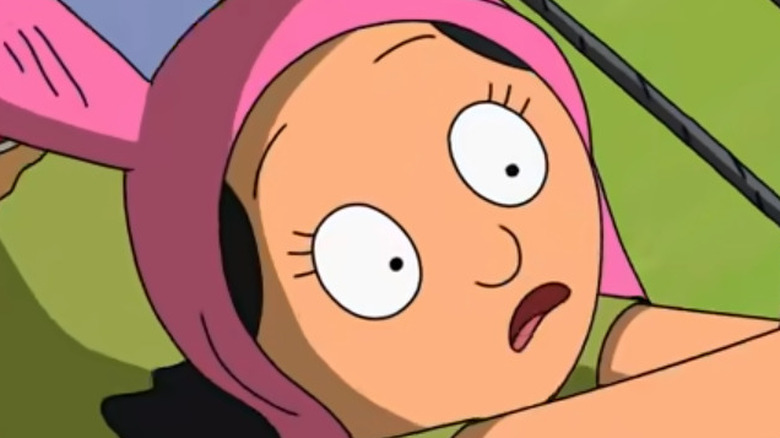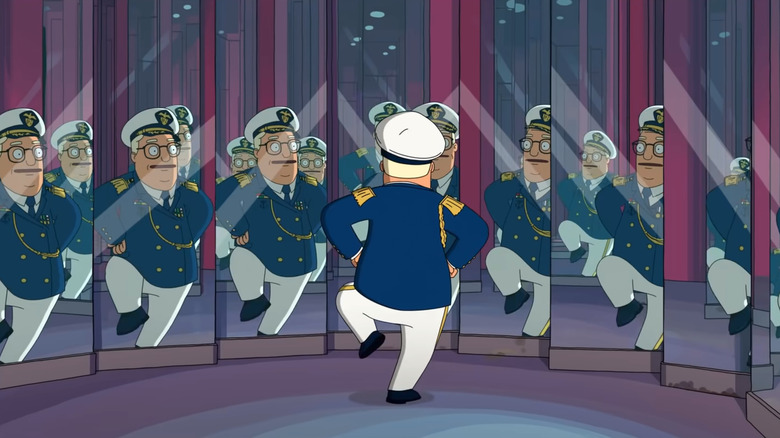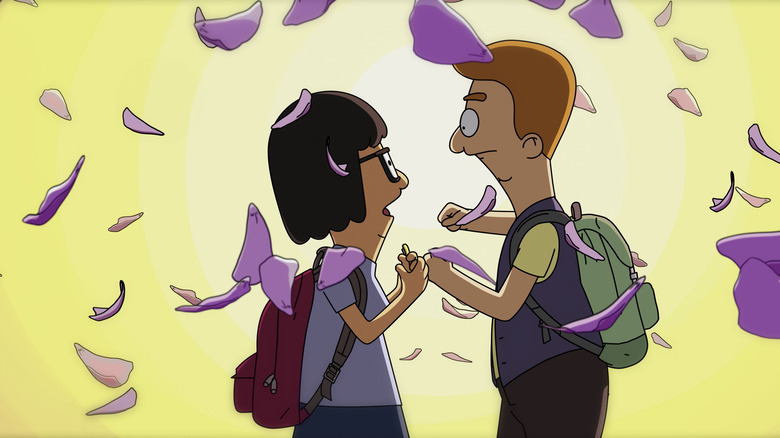Bob's Burgers' Loren Bouchard Explains Why 2D Animation Is Still The Best - Exclusive
When it comes to 2D animation, whether done through traditional hand-drawn methods or with computers, it remains omnipresent in television and is still fairly common in international features. Yet the major Hollywood studios treat the medium as essentially a dead art form. The success of Pixar and DreamWorks' 3D CGI features in the early 2000s, combined with a string of expensive hand-drawn flops, established 3D computer animation as the go-to for pretty much all American theatrical animation for the past two decades.
Most of the exceptions to this rule ("The Simpsons Movie," the first two "SpongeBob SquarePants" movies) have been adaptations of hand-drawn TV shows. "The Bob's Burgers Movie," which happens to be the first 2D animated film released theatrically by Disney since 2011's "Winnie the Pooh," fits this pattern as well. The film's creative term, however, has hopes that its potential success can open doors for more traditional animation to be seen in theaters in the future.
Looper had the chance to speak with Loren Bouchard (the film's co-writer, co-producer, and co-director), as well as Nora Smith (the film's co-writer and co-producer) and Bernard Derriman (the film's co-director) about "The Bob's Burgers Movie" and what it is that they love most about 2D animation.
Bouchard's defense of 2D animation comes down to the artistry
Bouchard offered a passionate plea to audiences about 2D animation's strengths: "When you're watching 2D animation, whether it's in a movie theater or on TV, what you're seeing is a bunch of artists making a lot of decisions about what not to include. It is, by definition, somewhat more minimal. It doesn't have to be simple, but it's reducing the world to a line drawing with some color. It's a fascinating process. I'm no artist, but I love artists, and I love seeing their decision-making process." He added, "If we draw a background for a 2D-animated movie, you're going to see a bunch of detail. You're going to see shadows and cracks in the sidewalk because we love that stuff, but at all points, something is also being left out. Some decision has been made..."
While Bouchard acknowledges that CGI also requires artistry, he argued, "CGI puts back in that true perspective and that real world, the camera's going to swoosh through the streets and you're going to see all the reflections, and now they've got all the hairs beautifully rendered and everything moves in this virtual wind. I respect it and I enjoy those movies too, but I really hope that the art and craft of 2D animation, especially at that higher level, that theatrical level, continues because I want to see what the next generation of 2D animators comes up with."
Success of the medium could lead to more diverse styles
Derriman and Smith shared Bouchard's enthusiasm for 2D animation. Smith echoed that "you feel the artist's hand" throughout the medium. Derriman, who is the most directly involved in the animation side of "The Bob's Burgers Movie" production, talked about having done traditional animation in high school and working at Disney before he joined "Bob's Burgers." He said, "I'm a big fan of 2D and I'd love to see more of it. Hopefully ... if people go and see it, others might follow [and] start getting back into 2D. It would be great."
People are going to see "The Bob's Burgers Movie," which opened to nearly $15 million over the four-day Memorial Day weekend, though it remains to be seen whether it will be successful enough in the long-run to encourage more 2D animated movies in theaters. Bouchard is encouraged by 2D-3D hybrid experiments like "Spider-Man: Into the Spider-Verse" as proof that animators are trying "to vary the look, to not have each giant budget four-quadrant family animated movie look the same as the other."
"The Bob's Burgers Movie" is now playing in theaters.


